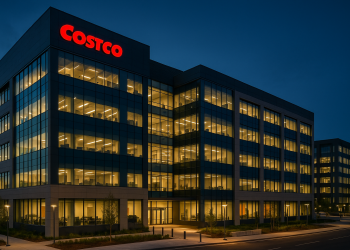No products in the cart.
Free Trade in Flux: The UK’s Diverging Paths with India and the U.S.
As the UK navigates post-Brexit trade realities, its negotiations with India and the U.S. reveal stark contrasts in strategy—India offers growth and opportunity, while the U.S. signals protectionism. This deep dive unpacks what's at stake, what's promised, and what the future holds for global trade.
In a world increasingly defined by shifting alliances and economic realignments, the United Kingdom finds itself at a crossroads, navigating divergent trade paths with two of its most significant partners: India and the United States. As global trade dynamics evolve, the UK’s engagements with these nations offer a window into the complexities and challenges of modern free trade agreements (FTAs).
The UK-India FTA: A Strategic Partnership in the Making
After years of negotiations, the UK and India are on the cusp of finalizing a landmark FTA, poised to reshape bilateral trade and investment landscapes. With 14 rounds of talks completed since January 2022, the agreement aims to eliminate tariffs on 85% of UK exports and 99% of Indian exports over the next decade.
Key Provisions:
- Tariff Reductions: India has agreed to gradually reduce its steep 150% tariff on Scotch whisky to 75% over ten years, mirroring concessions made in its FTA with Australia.
- Automotive Sector: The UK seeks reduced tariffs on electric vehicles and luxury cars, with India proposing a capped import of 2,000–2,500 premium electric vehicles annually at reduced duties.
- Services and Mobility: India is advocating for greater access for its skilled professionals in sectors like IT and healthcare, alongside a social security agreement to prevent double contributions for Indian workers in the UK.
Challenges Ahead:
Services and Mobility: India is advocating for greater access for its skilled professionals in sectors like IT and healthcare, alongside a social security agreement to prevent double contributions for Indian workers in the UK.
- Immigration Policies: The UK’s Labour government, under Prime Minister Keir Starmer, has signaled a tougher stance on immigration, potentially complicating India’s demands for easier work visas.
- Environmental Standards: The UK’s proposed Carbon Border Adjustment Mechanism (CBAM), set to take effect in 2027, could impose additional costs on Indian exports like steel and fertilizers, unless exemptions are negotiated.
Despite these hurdles, both nations are optimistic. Bilateral trade, which stood at £41 billion for the 12 months ending September 2024, is expected to double within a decade, bolstered by this comprehensive agreement.
The UK-U.S. Trade Landscape: Navigating Protectionism
In stark contrast, the UK’s trade relationship with the United States has become increasingly complex. President Donald Trump’s administration has implemented sweeping tariffs, including a universal 10% baseline on imports, with specific duties reaching up to 145% on certain Chinese goods.
Recent Developments:
- UK-U.S. Trade Deal: A new agreement allows 100,000 UK-made cars annually to enter the U.S. market tariff-free and removes U.S. tariffs on British airplane components. In return, the UK has eliminated its 19% ethanol tariff and aligned its aluminum and steel tariffs with U.S. rates.
Implications:
While these concessions offer some relief, the broader protectionist stance of the U.S. has introduced significant uncertainty. Markets have reacted tumultuously, with companies reevaluating supply chains and investment strategies. Economic forecasts predict slower growth and increased inflation, with recession probabilities estimated at 45% by Goldman Sachs and 60% by JP Morgan.
Global Trade Trends: A Shift Towards Bilateralism
As multilateral trade agreements face challenges, nations are increasingly turning to bilateral FTAs to secure economic interests. India, for instance, is actively expanding its trade engagements, initiating discussions with countries like Chile, New Zealand, and the European Union.
Economic forecasts predict slower growth and increased inflation, with recession probabilities estimated at 45% by Goldman Sachs and 60% by JP Morgan.
This proliferation of bilateral agreements, however, raises concerns about the “spaghetti bowl effect,” where overlapping FTAs create a complex web of rules and standards, potentially hindering trade efficiency.
Looking Ahead: Strategic Choices for the UK
The UK’s divergent trade paths with India and the U.S. underscore the complexities of navigating a rapidly evolving global trade environment. While the FTA with India promises substantial economic benefits and deeper strategic ties, the relationship with the U.S. is marked by uncertainty and protectionist policies.
As the UK charts its post-Brexit economic course, it faces critical decisions: whether to align more closely with emerging markets like India, embracing mutual growth and cooperation, or to navigate the challenging terrain of U.S. protectionism. The choices made will not only shape the UK’s economic future but also influence the broader dynamics of global trade in the years to come.










